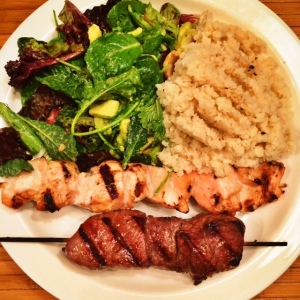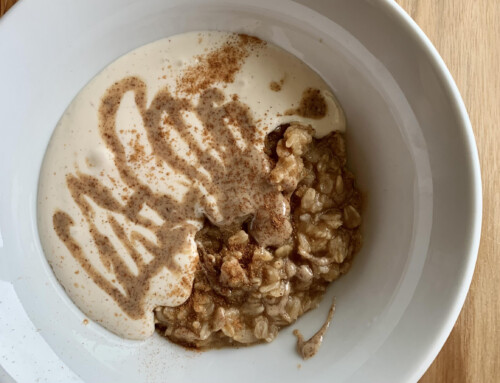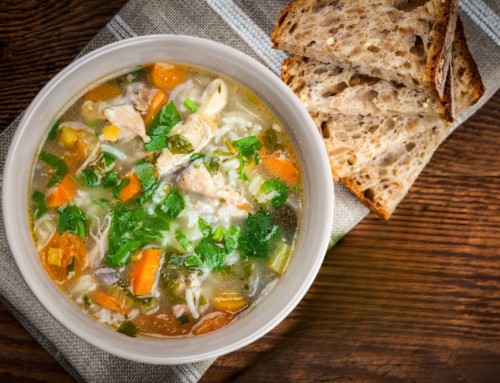Seriously, what is the deal with soy? I feel like just a few years ago soy was a super food, and today, there are countless articles warning against it. I’ve decided to break it down for you, provide some facts, and hopefully dispel the confusion about this food that can be made into anything from sauce to funky looking meat substitutes (Tofurky anyone??).
I have been doing some research and the best article I have found on the subject comes from one of my favorite bloggers, Liz Wolfe. She does an amazing job of backing her points with research, which is necessary when attempting to truly argue any point at all, especially in this world of internet access to pretty much any information (accurate or not). Through her blog post and my own continued research, I have started to get my ideas together on the subject of soy. Your decision on the matter, obviously, is up to you, but it never hurts to share ideas and get conversations started. So what did I find?
To sum it all up, I am pretty confident that soy serves no purpose in a healthy diet. It’s devoid of the nutrients that can be found in so many other foods, it’s an allergen to many, it’s proven to cause some serious health issues to babies, and if that isn’t enough, soy plays some serious defense, blocking some of the most important nutrients from doing their job in your body.
It seems pretty cut and dry, so why the controversy? First, let’s touch on the so-called studies performed on this stuff. Here are some quotes from the research findings for a few different studies on soy (courtesy of Liz Wolfe):
First up, from the Journal of Nutrition, Health Effects of Soy Protein and Isoflavones in Humans
“The most recent human results obtained since 1999 show some inconsistencies in the lipid-lowering functions of soy, especially the magnitude of the effects. Moreover, studies on the other potential health benefits of soy such as prevention of postmenopausal bone loss, certain types of cancers, and diabetes and relief of menopausal symptoms remain inconclusive. Meanwhile, the potential adverse effects of certain soy components observed in animal and human studies such as antithyroid actions, endocrine disruption, and carcinogenesis enhancement potential are not well understood but are increasingly becoming a concern for soy consumers, health professionals, and policy makers.”
Next up, from Soy: A Complete Source of Protein by Aaron J. Michelfelder, MD at Loyola University of Chicago Stritch School of Medicine:
“Although studies show an improvement in lipid levels, there have been no studies to prove that soy protein interventions improve cardiovascular outcomes. One study that included more than 16,000 women failed to show a reduction in cardiovascular risk with a diet high in phytoestrogens. Therefore, more data are needed before a definitive relationship between soy and cardiovascular outcomes can be established.”
And
“A randomized placebo-controlled trial of a dietary intervention of multibotanicals plus whole soy protein did not show the soy intervention to be better than placebo over one year in 165 women.”
Studies like these ones seem to only conclude (or not) that soy COULD be beneficial. To make things even more ambiguous, these studies are often performed on small omnivorous animals (not humans), are entirely unrealistic (ridiculous over-supplementation), or simply have inconclusive findings (like the ones above). I don’t know about you, but nothing I have read so far is clear enough to convince me to eat a “food” that might have some serious negative implications. Let’s talk about what those negatives might be.
According to The Westin A. Price Foundation, a non-profit organization dedicated to restoring nutrient-dense foods to the human diet through education, research and activism, there are many dangers to consuming soy in high amounts. Here are a few:
- There are high levels of phytic acid in soy, which reduce absorption and use of calcium, magnesium, copper, iron, zinc and Vitamins B12 and D in the body. Phytic acid has also been shown to cause growth problems in children.
- Trypsin inhibitors in soy interfere with protein digestion and may cause pancreatic disorders.
- Soy phytoestrogens disrupt endocrine function and have the potential to cause infertility and to promote breast cancer in adult women. They may also cause hypothyroidism and thyroid cancer.
- In processing soy to make protein, fragile proteins are denatured during high temperature processing which results in the formation of toxic lysinoalanine and highly carcinogenic nitrosamines.
- Soy foods contain high levels of aluminum, which is toxic to the nervous system and the kidneys.
See THIS link for resources.
The reality is that there are HUNDREDS of nutrient dense foods to eat instead of soy, which is pretty much devoid of nutrients or any research to back up a single health claim. Pastured meats and eggs, bright nutrient-dense fruits and veggies, vitamin rich dairy from grass fed cows; each of these knocks soy out of the park when we compare bio-available nutrients.
If we think about the argument from an evolutionary mindset, beans like the soy bean have not been around for very long, and the anti nutrients found in these foods make for a situation where we are not only eating something that provides little to no nutrient density, but it can also hinder the nutrient absorption of any other foods we might be eating with it. And let’s be honest, can you think of a SINGLE soy-based item that tastes as good as its real food counterpart? I sure can’t (and I was a vegetarian for 7 years).
What about sushi!? Well that’s pretty easy, bring along some coconut aminos, ask for the sauce to be left off your roll (yes, I enjoy white rice on occasion), order delicious and fresh sashimi, and you are set for a delicious meal sans soy. Even vegetarians can find better substitutes for meat that are still whole, real foods (A sweet potato has more bio available amino acids than soy, for instance). If you have questions about how to replace your current soy-based foods, always feel free to leave a comment below, and I will respond with tips, advice, and links to help you out.
If that’s not enough, check out THIS recent lawsuit on soy!
So there is my opinion for you. I feel pretty passionate about this one, if you can’t tell. Probably because I am currently in year 3 of undoing some serious damage caused by replacing all meat in my diet with things like soy and other legumes, wheat, and sugar. There is a lot of damage to be reversed (but I will save that for another post). Until then, I’ll be eating nutrient dense foods with bioavailable vitamins, minerals, and amino acids, and I hope you will too!
In celebration of the fact that there are SO many delicious foods to eat instead of soy, I came up with this delicious Asian inspired cauli-rice recipe that will leave even your biggest soy sauce fan asking for more. Enjoy!
Asian Inspired Cauli-Rice (GF, NF)
WHAT YOU NEED:
- 1 head of organic cauliflower chopped into large florets
- 2 TB coconut oil or grass fed butter, ghee, or tallow
- 1-2 cloves of garlic, minced
- 2 scallions, chopped
- 1-2 TB coconut aminos
- sea salt and pepper to taste
WHAT YOU DO:
- turn your food processor on (I used a Vitamix) and drop florets in one by one until the result looks like rice (you may need to do this in 2 batches so it doesn’t get stuck)
- heat a wok or large skillet over medium/high heat and add 1 TB of cooking fat of your choice
- add your minced garlic and white parts of the scallions and cook until you can smell them (mmmm)
- add the cauli-rice and 1 pinch of salt to start
- let this cook for a few minutes, stirring
- stir in the remaining cooking fat, 1 TB coconut aminos, pepper, and another pinch of salt
- let it cook until cauli-rice is tender, tasting throughout and adding more salt and/or aminos as needed
- add the green parts of the scallions and stir
- serve warm and enjoy!
We enjoyed this as a perfect side to some anytime any meat marinated beef kabobs and a summer salad. What are your thoughts on soy? Do you miss it? Do you eat it? Let me know what you think.







Leave A Comment